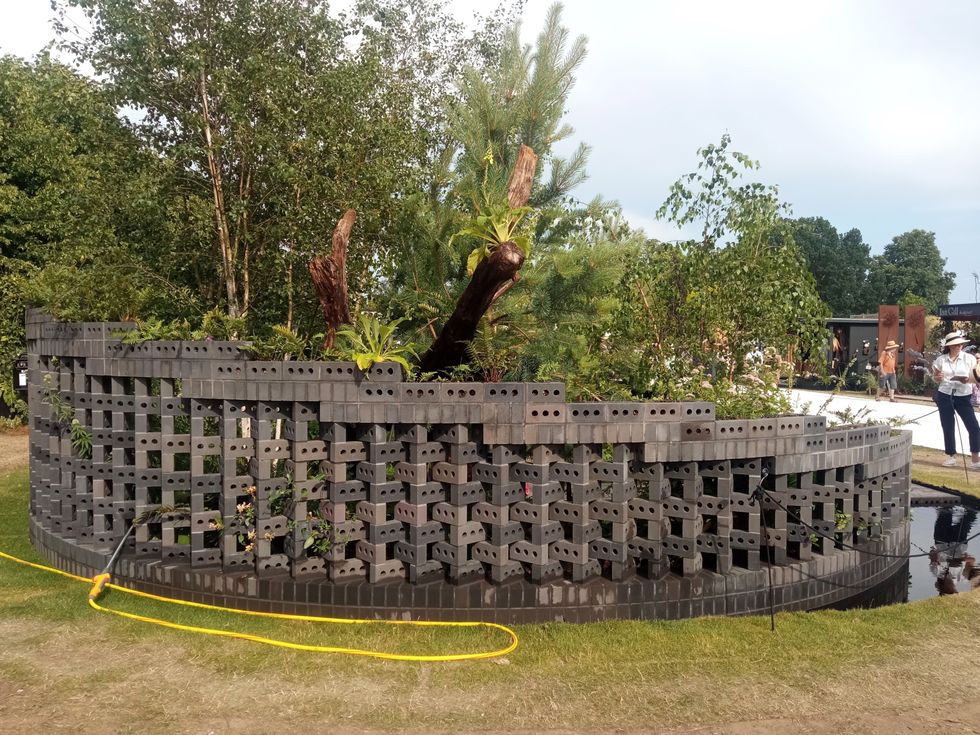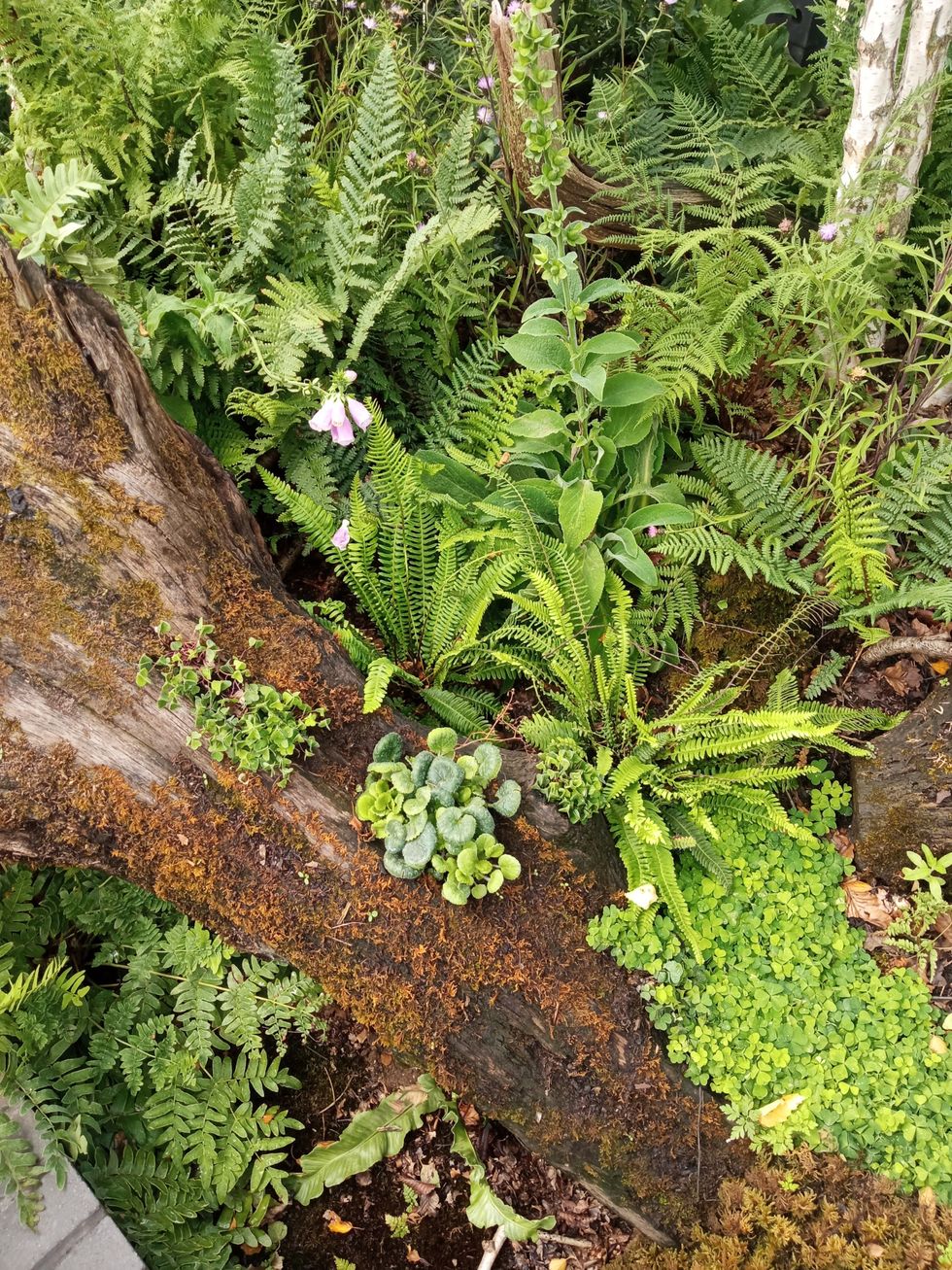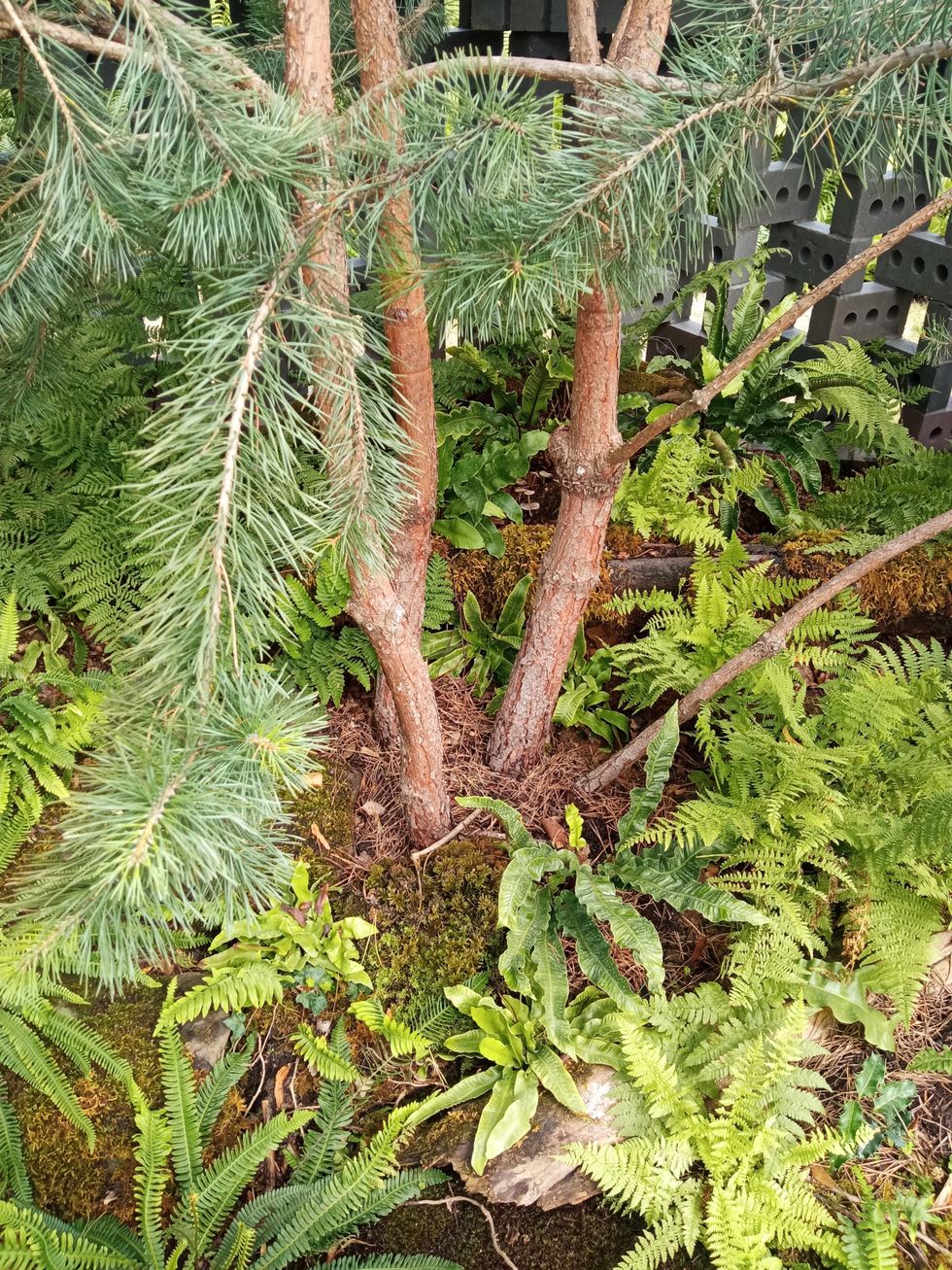BRITISH Asians are being encouraged to take up gardening by a couple who have won a record five medals at the Royal Horticultural Society’s Hampton Court Palace Garden Festival.
“It’s a contemporary reimagining of a traditional walled garden, highlighting the British and Irish rainforests,” said Jewlsy Mathews, who was born in Britain of parents from Kerala, a southern Indian state known for its lush vegetation.
Mathews, partner in a design studio set up by her Irish husband Mike McMahon, made her debut at the Chelsea Flower Show last year. The balcony and container garden submitted with her husband won a gold medal.
It was one of three gardens “pre-selected” for viewing by King Charles and Queen Camilla.
This year at Hampton Court, their show garden was visited by Sophie, the Duchess of Edinburgh.
Its jali wall is “inspired by some fine examples of India’s exquisite architecture”.

Speaking after being awarded five medals at Hampton Court, Mathews told Eastern Eye: “This is the first time a garden has ever received all the RHS judges’ awards. It’s a contemporary reimagining of a traditional walled garden, highlighting the British and Irish rainforests. They used to cover 20 per cent of the UK, and now it’s dwindled down to one per cent, so we really wanted to highlight the importance of these landscapes and their beauty.”

She explained their medals tally: “We got a gold for the garden, and then we won the best construction award, the best show garden award, and with that, we won the Tudor Rose award. That’s a prize not given every year. It’s for exceptionally high point scoring by the judges. Our gold was a very high gold rather than borderline gold. The Tudor Rose wasn’t given last year. It’s only given some years, so it’s an infrequent award.”
She added: “Probably the one that means the most to us is we also got the environmental innovation award.”

Last year Mathews explained her family connection with Kerala: “My mum and my dad are both from Kerala. My mum, Lucy Mathews Payyanat, was from Kanjirappally. My dad, Jose Mathews Payyanat, is from Champakulam which is near Alleppey (Alappuzha).” Jewlsy and her husband, have a flat in Ernakulam, near Cochin, in Kerala, which they visit regularly.
Their London apartment has two balconies, where they have created the effect of a small jungle, called a “junglette”, which they sought to reproduce at Chelsea.
The garden at Chelsea was also a tribute to her mother who passed away in September 2023. Mathews and her husband were in Kerala when they heard their submission for Chelsea had been accepted, news they were happy to share with their mother before she passed away.

Some of the stones used in Hampton Court this year have come from her father’s garden, and “will be returned to him when the festival is over”, said Mathews.
McMahon said that “you would normally have a solid brick wall around your garden with a door through it. Here we used a jali wall, which is common in India. The way the brick is stacked we let light through, which creates dappled light on the forest floor, similar to what you would have in a forest. But then the holes in the brick also act as one big, giant, insect hotel, which promotes nature and biodiversity. The brick wall is incredibly complicated as a structure. That’s why we won the best construction award.
“And at the front, in lieu of having a door, which you would normally have, we have water as the threshold into the garden instead.”
At Chelsea last year, McMahon recalled, “we used jungle type plants. All the plants here (at Hampton Court) are native to either Britain or Ireland. You can see a massive big tree trunk. Its purpose is to guide your eyes upwards, so you start looking at all those plants growing on the trees. And we have lots of ferns growing on top of the garden wall called polypodies.”
Their Hampton Court garden – it’s supported by Subaru UK and Ireland – has incorporated Silver Birch, Scots Pine, Fox Gloves, Devil’s Bit Scabious, and the Common Polybody, a tough evergreen fern with leathery, deep cut fronds.
“This is only the second garden we have designed,” revealed McMahon. “The judges were very, very impressed. I said to them neither of us has any formal training in horticulture. We just read a lot of books on plants.”

Meanwhile, his wife’s message to British Asians, other than to take up gardening, was to treat their garden or a balcony – “whatever outdoor space you have” – as an extra room to the house.
“Sometimes this gets forgotten because people concentrate on the inside of the house,” she said. “Actually, it’s another room which bring you more joy than people give credit for. There are so many barren balconies in cities. As we saw with our garden (at Chelsea) last year, it’s such an opportunity to create extra space.”
She went on: “It’s really a space for contemplation and quiet and reflection, and all the things that make us well minded and healthy. When you walk into such a space, you’re not like, ‘Oh gosh, I’ve got to do the laundry and the housework, all sorts of life clutter. It’s where you can be calm and still.”
They have given advice to people on how they can make their own rainforest garden. They have offered such tips as: incorporate layers like a rainforest; create a moist, humid microclimate; use native species; encourage wildlife; and let nature be the designer.

Mathews said: “We have used 13 different kinds of fern.”
She drew attention to the mushrooms that had started to appear in the dark corners of the garden.
The couple say in a formal note: “The design embraces the full vertical potential of the space, with planting structured across forest-like layers: ground, understory, and canopy. Epiphytes grow on and through tree trunks and the perforated jali wall, while a planted trough crowns the top of the wall. Oxalis acetosella and Polypodium vulgare are trained to grow up the sculptural fallen logs, reinforcing the sense of a forest reclaiming its own. Plants emerge from crevices, spill through openings, and root on vertical surfaces— mirroring how nature slowly takes over ruins. This immersive, layered planting celebrates the sculptural variety and form of native ferns, using them as both structural and textural elements throughout the garden .”







 Rage bait isn’t just clickbait — it’s Oxford University Press’ word of the year for 2025 iStock/Gemini AI
Rage bait isn’t just clickbait — it’s Oxford University Press’ word of the year for 2025 iStock/Gemini AI 
 Online Trends iStock
Online Trends iStock Rage bait isn\u2019t just clickbait \u2014 it\u2019s Oxford University Press\u2019 word of the year for 2025 iStock/Gemini AI
Rage bait isn\u2019t just clickbait \u2014 it\u2019s Oxford University Press\u2019 word of the year for 2025 iStock/Gemini AI 






